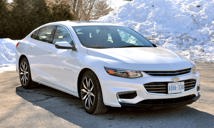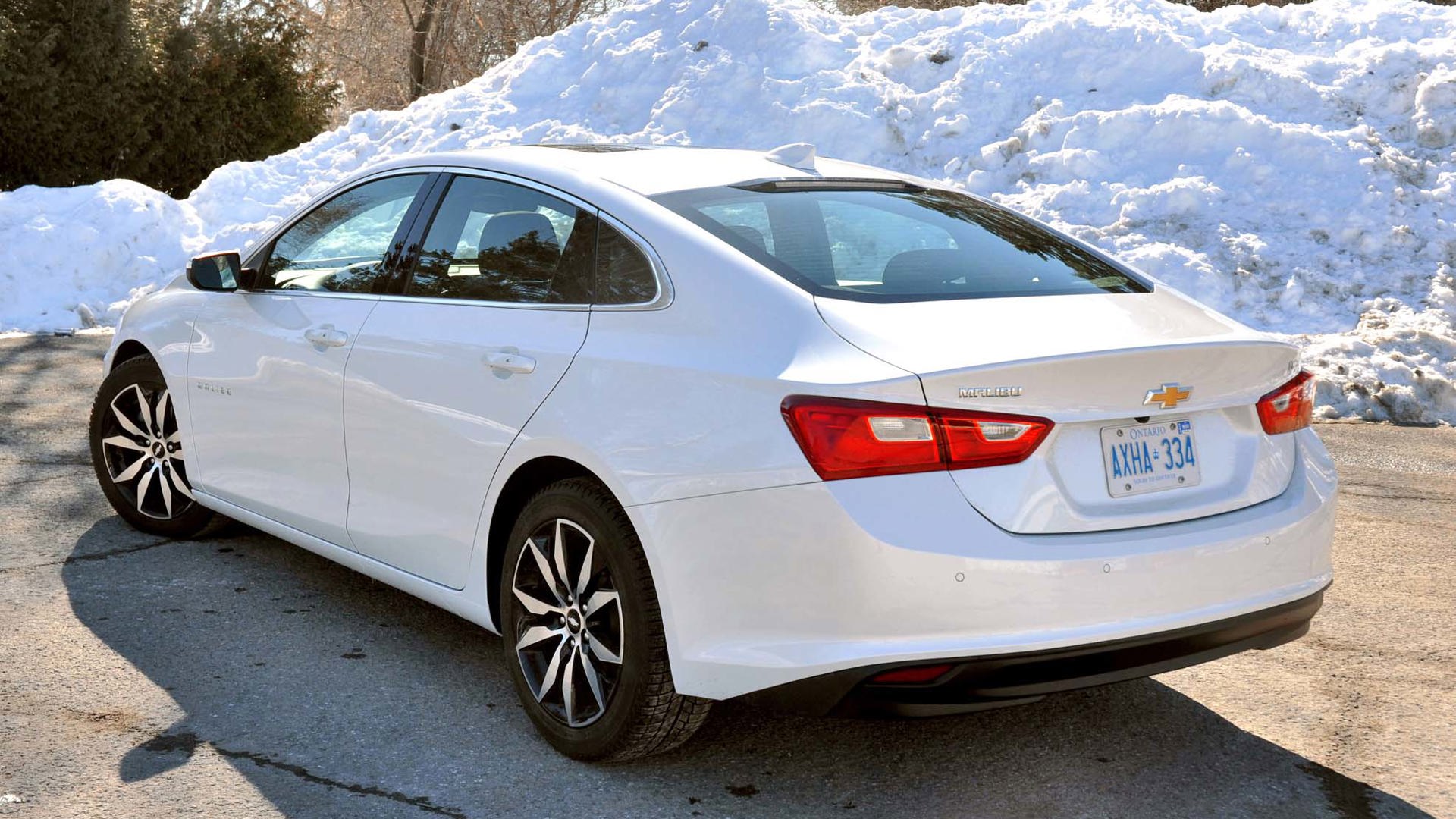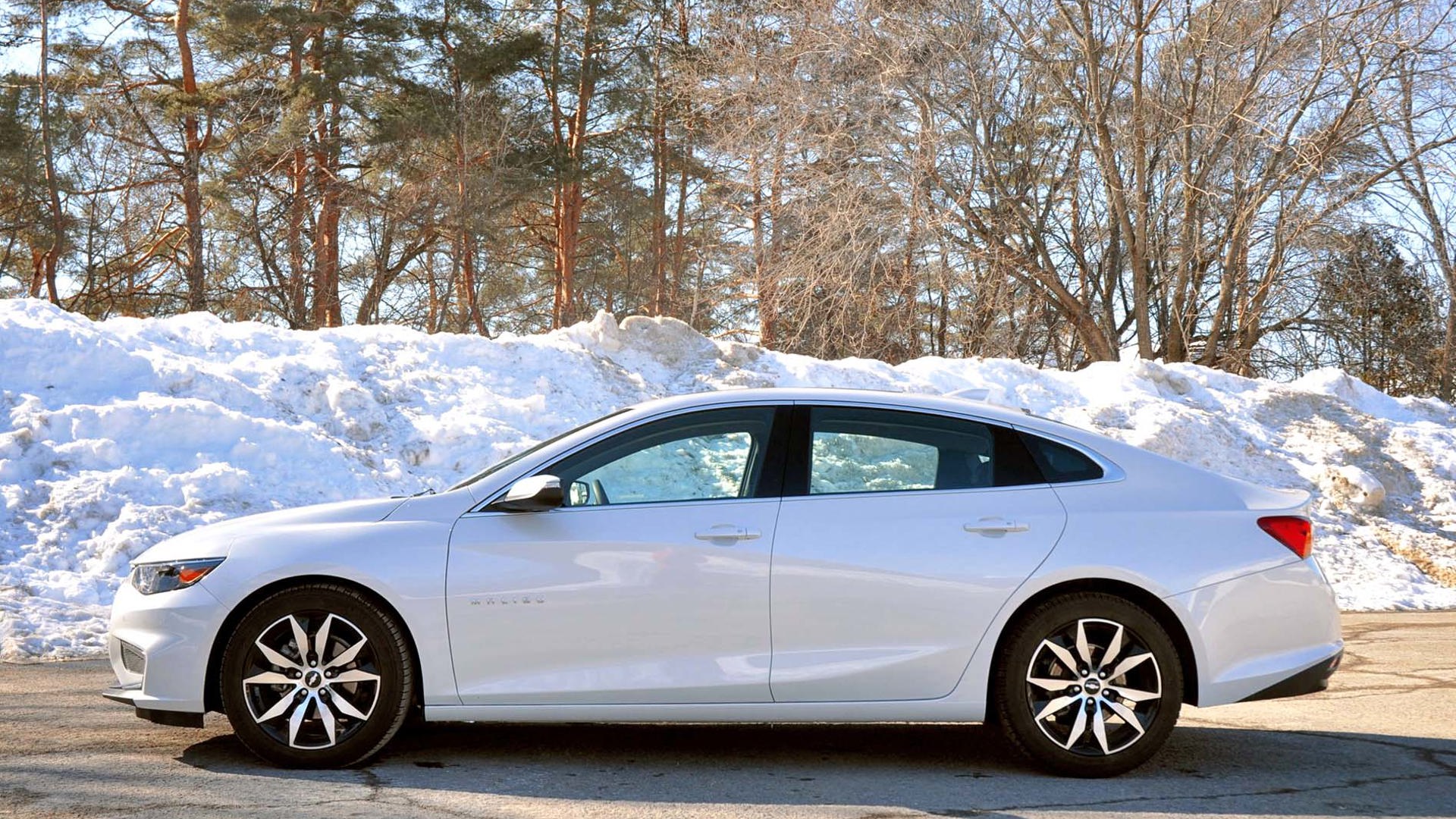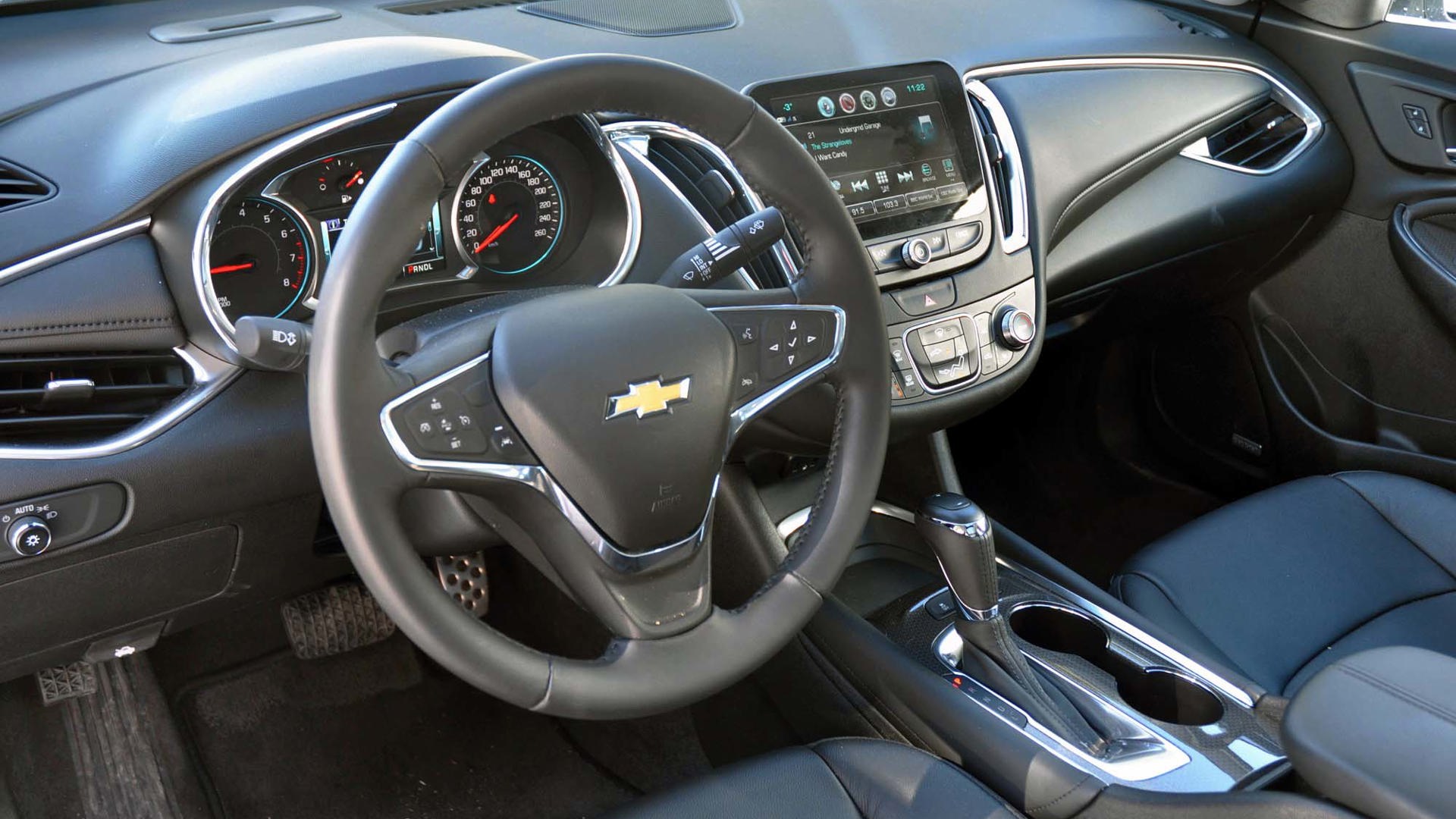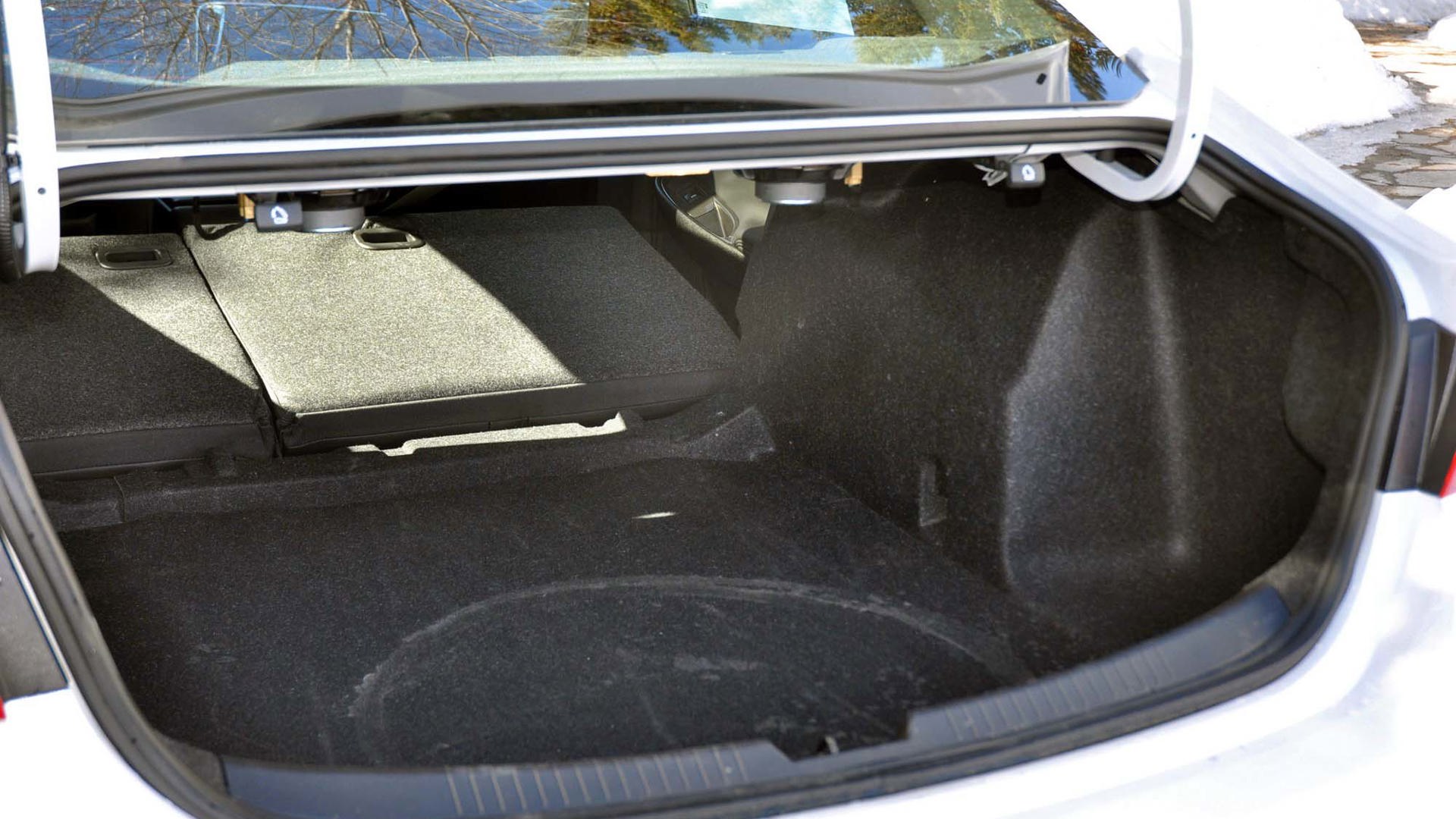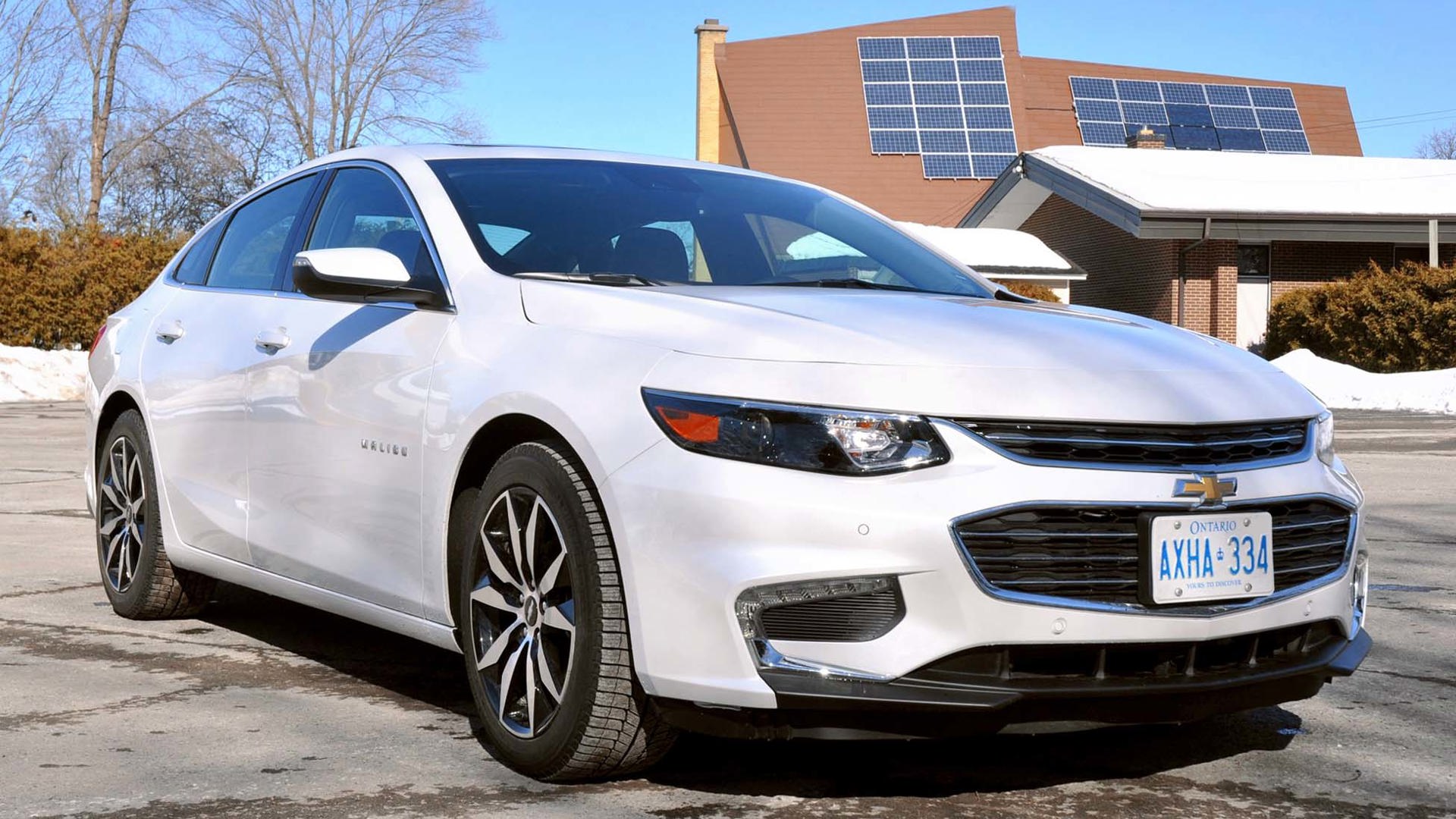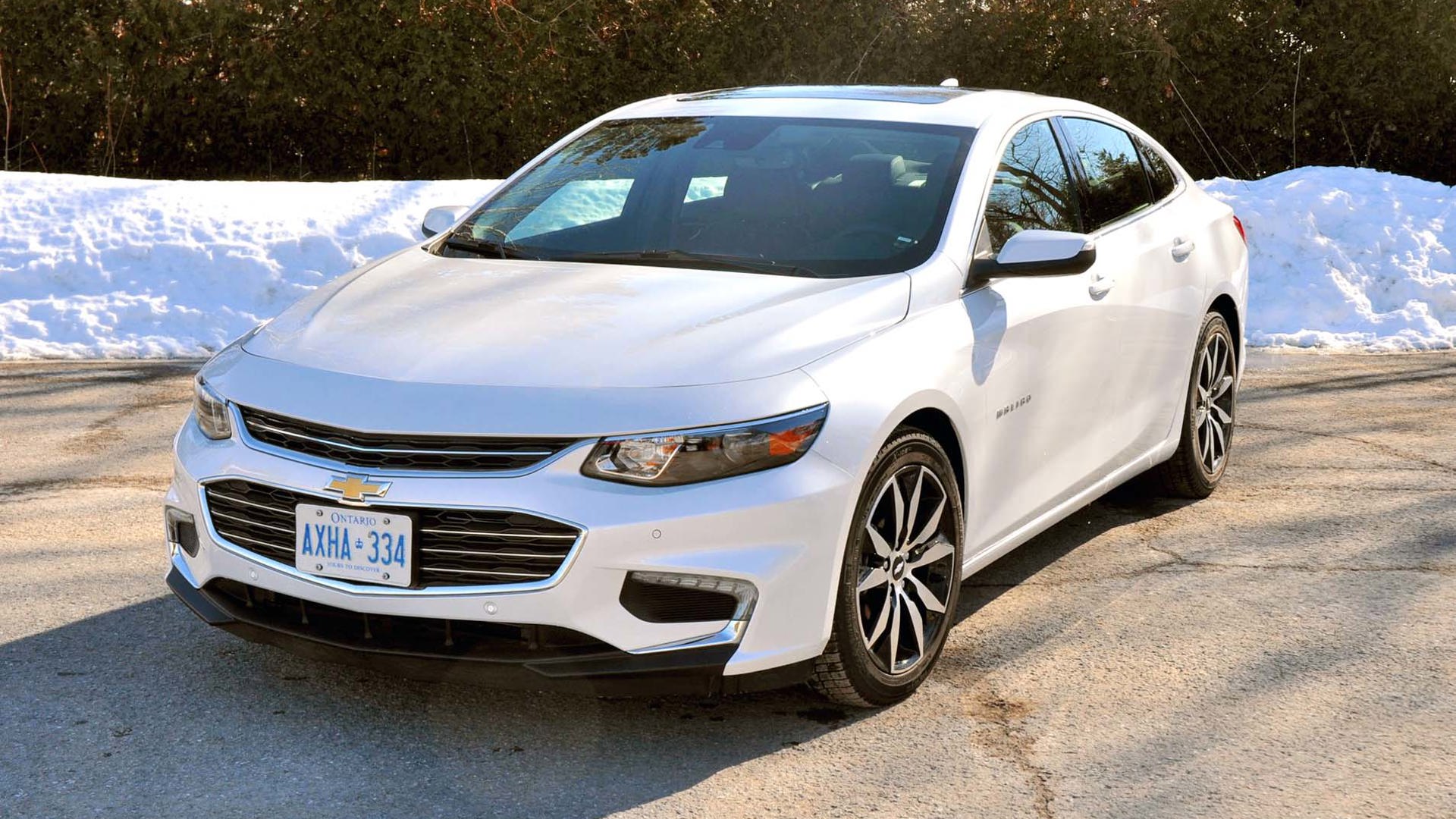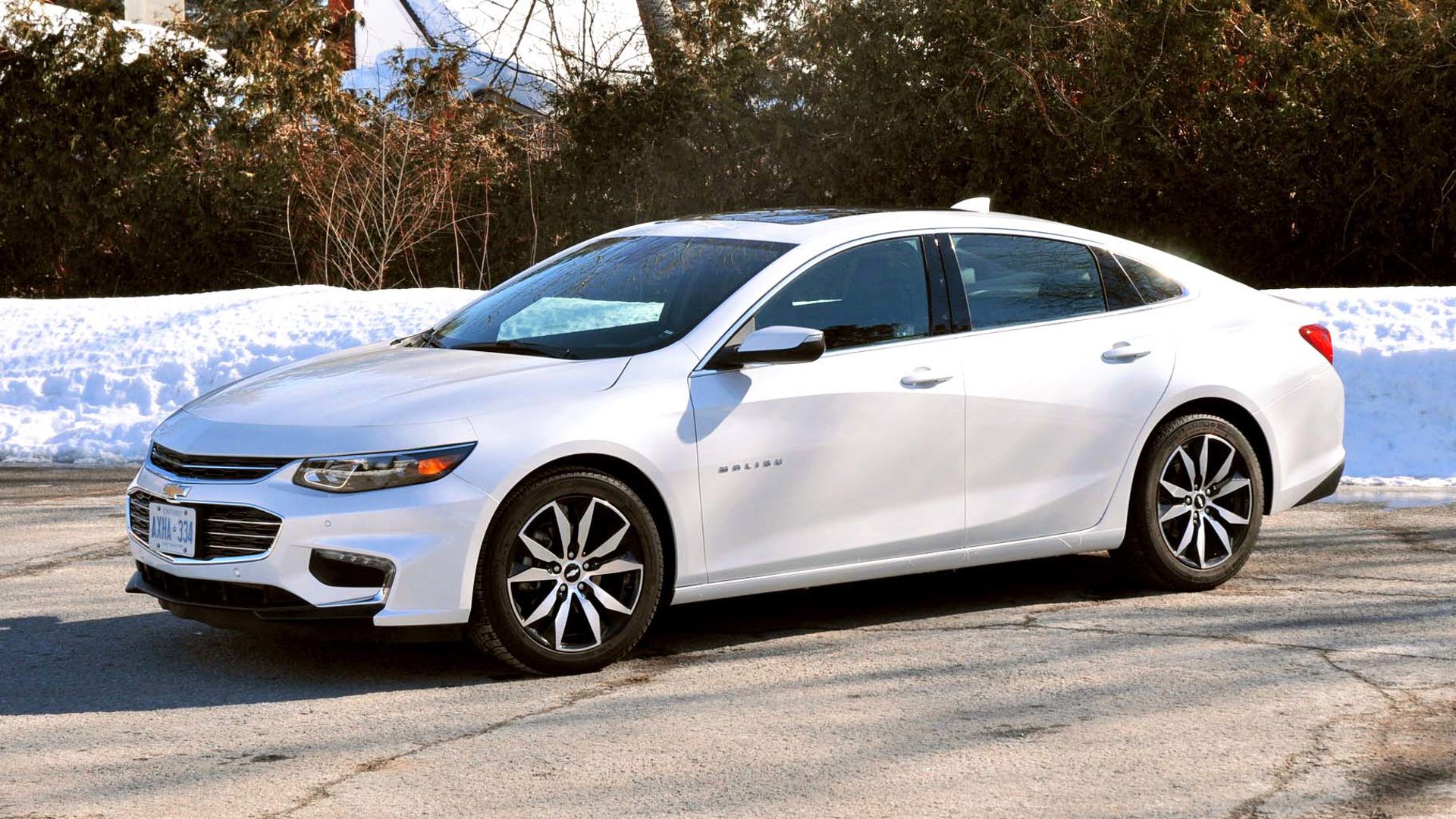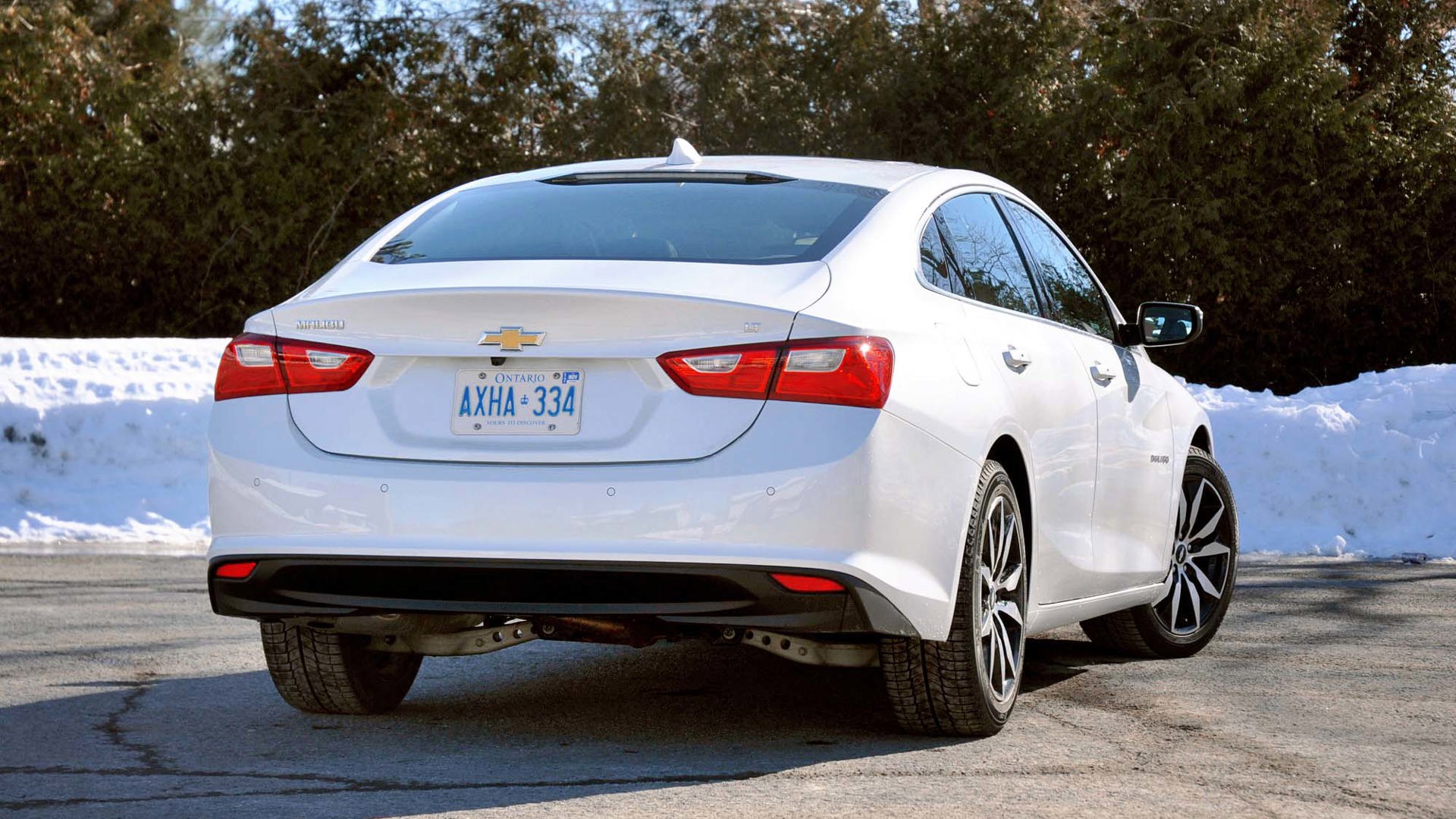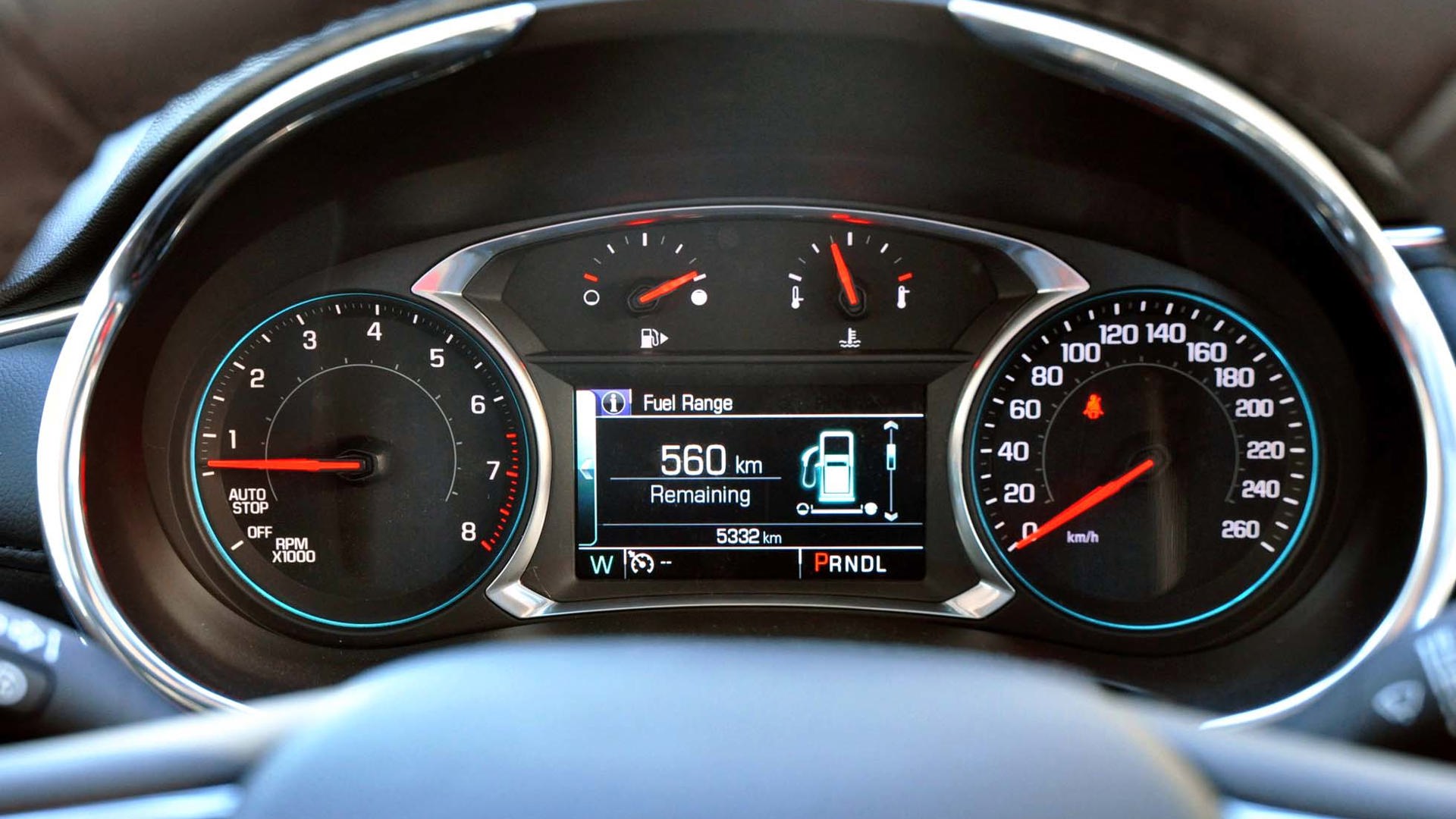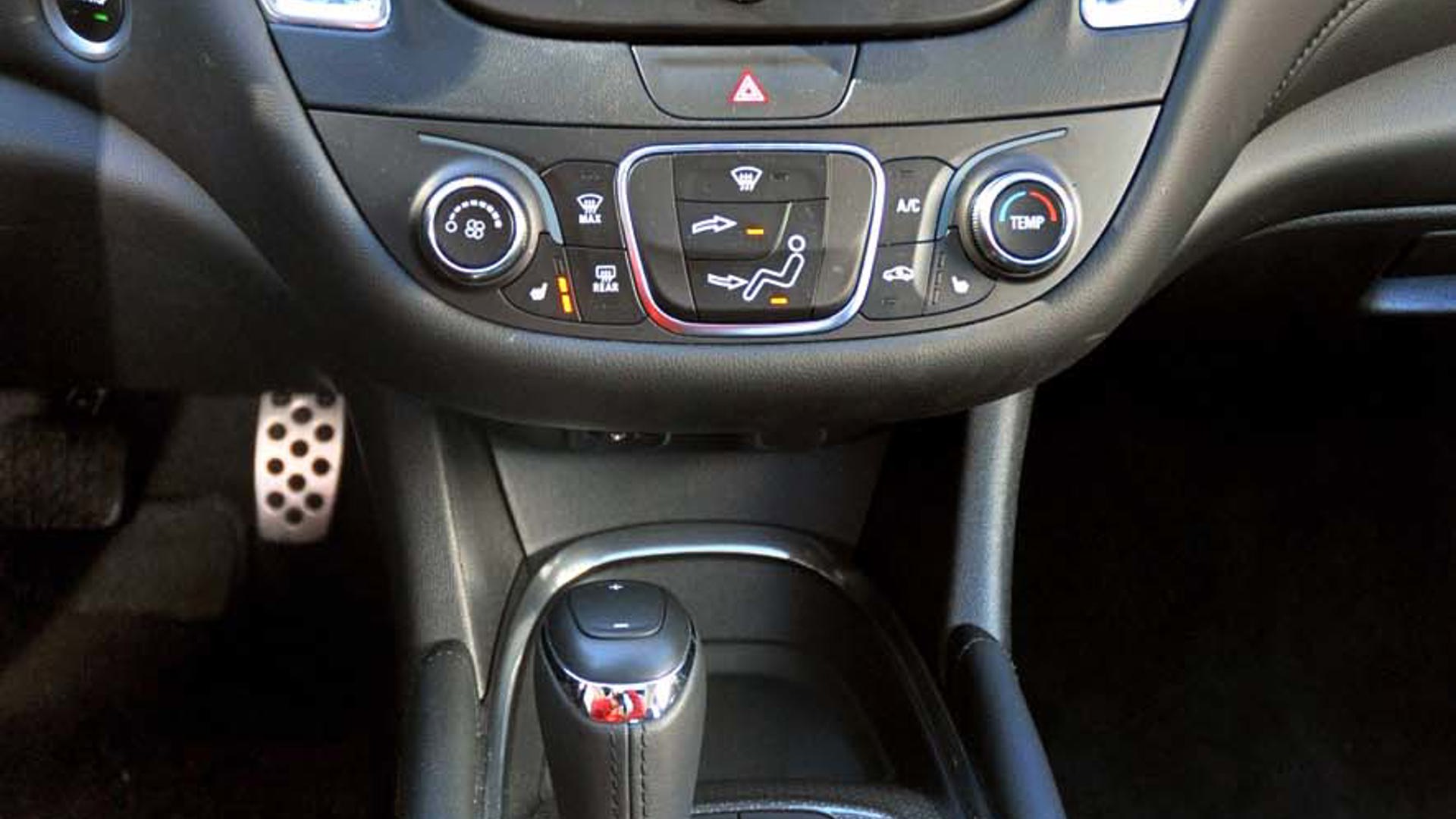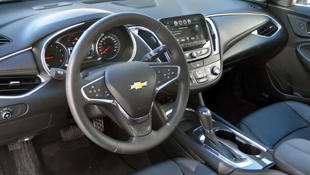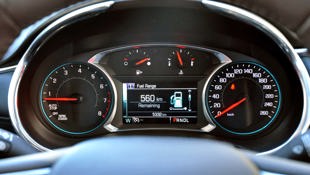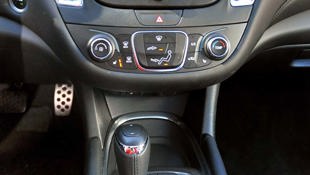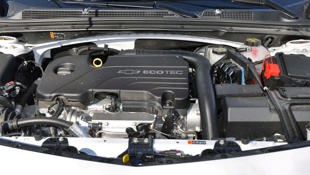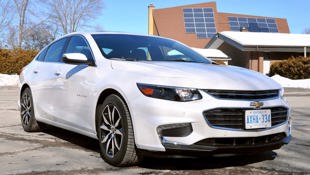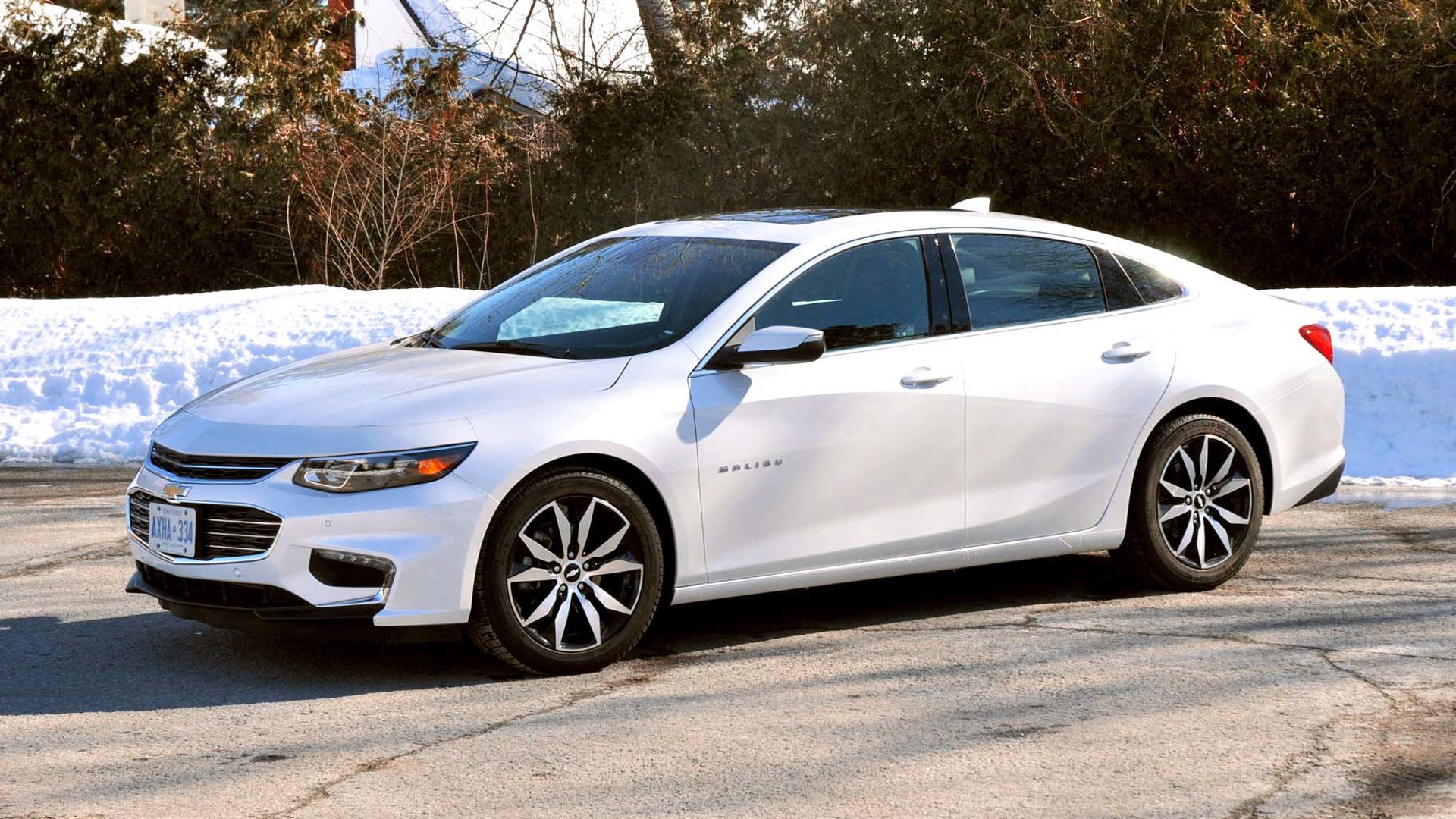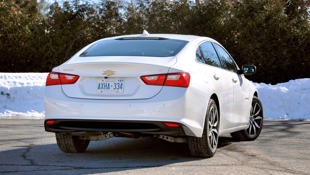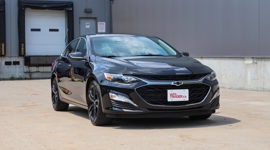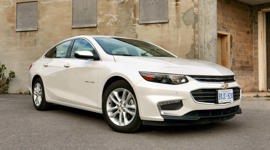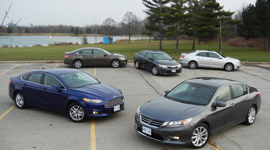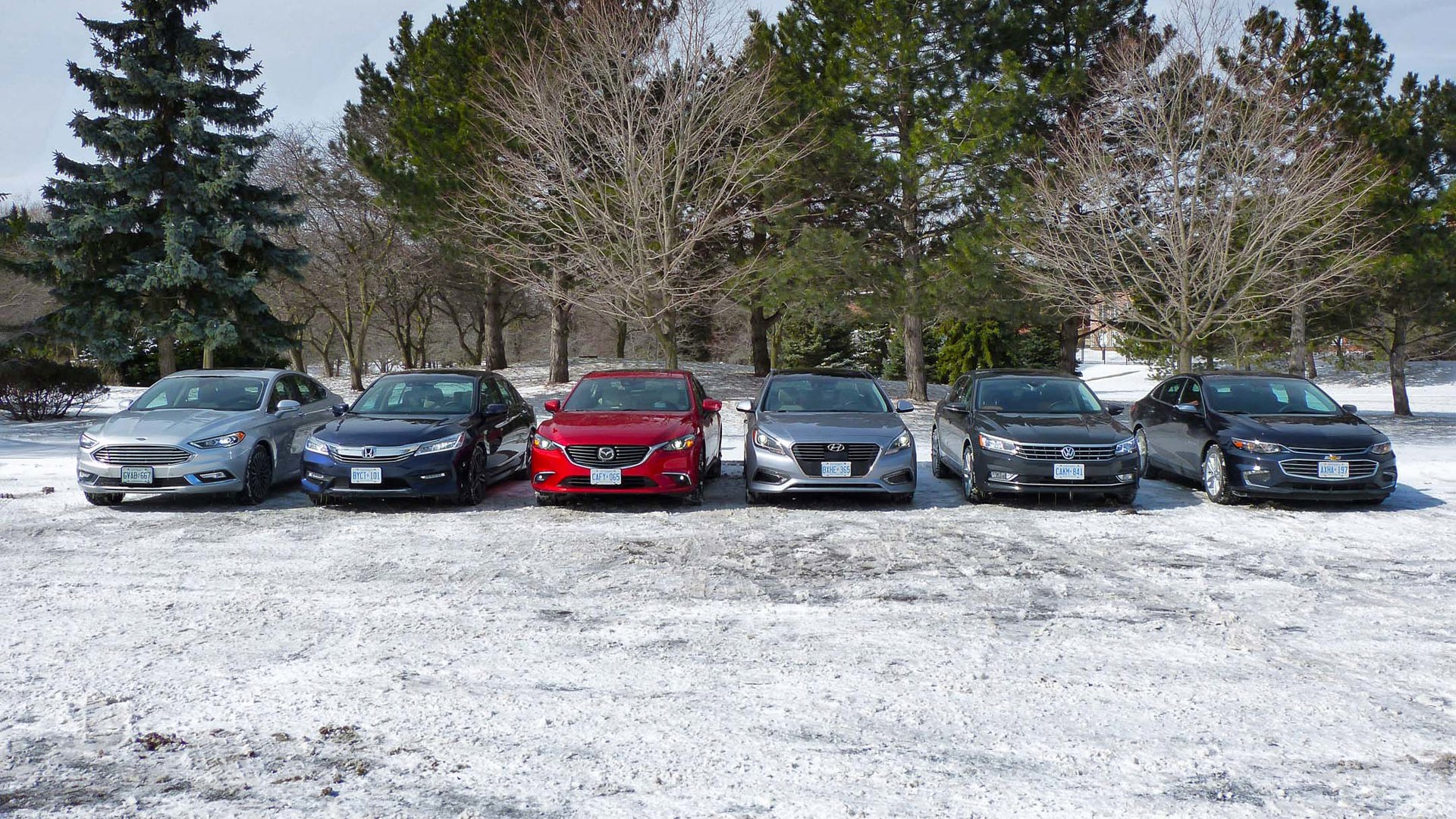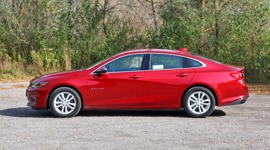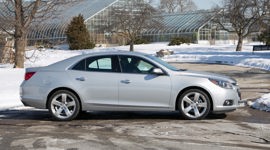 AutoTrader SCORE
AutoTrader SCORE
-
STYLING8/10
-
Safety7/10
-
PRACTICALITY7/10
-
USER-FRIENDLINESS7/10
-
FEATURES7/10
-
POWER8/10
-
COMFORT7/10
-
DRIVING FEEL7/10
-
FUEL ECONOMY8/10
-
VALUE7/10
My classic 1956 MGA is powered with a 1.5-litre engine that makes 68 horsepower and 77 pound-feet of torque on a good day. And that from a sports car! I mention this because under the hood of a 2017 Chevrolet Malibu LT you’ll likewise find an engine of 1.5L displacement, which some folks may believe to be inadequate for a midsize American car.
Indeed there is a replacement for displacement. It’s called brains.
However, the Malibu’s direct-injected and turbocharged Ecotec inline-four cranks out 160 hp at 5,700 rpm and 184 lb-ft of torque at 2,500–3,000 rpm any time you like.
So I’m thinking engine transplant, right?
No, what I’m thinking is that indeed there is a replacement for displacement. It’s called brains. This engine – drivetrain, really, including the six-speed automatic transmission – is the result of some very smart engineering. Furthermore, it runs on regular grade fuel and enables the Malibu to return a thrifty 8.8/6.5 L/100km, city/highway; 7.8 L/100km combined. I got a steady 6.4 L/100km from about 900 km highway driving. Impressive, I thought.
Offered in L, LS, LT, Hybrid and Premier models, the Malibu L starts at $21,945 and the Malibu LT at $25,245. It arrives, as mainstream cars have to these days, generously equipped. You get the spunky engine, 17-inch alloy wheels, five-year basic OnStar plan, Bluetooth with Apple CarPlay and Android Auto compatibility, satellite radio, air conditioning, heated power mirrors, remote keyless entry and start, rear vision camera, automatic headlight control, power driver’s seat and a six-speaker audio system.
However, our test car added a bit over $8,000 to the price. Representing the way many buyers would specify their LT, it arrived with the True North and Driver Confidence packages that included features like leather upholstery, extended sunroof, navigation, 18-inch wheels, front automatic braking, park assist, side blind-zone alert, lane-change alert and lane-keep assist and rear cross-traffic alert. The Iridescent Pearl Tricoat paint itself was an $1,195 option that, along with the other goodies, brought the as-tested price to $35,635 including destination charges. Not out of line for such a vehicle in this segment.
Like all midsize vehicles, Malibu has grown to generous proportions. It’ll seat five adults comfortably and swallow their gear in its 447 L trunk. You can lower the seat backs if desired which will expand cargo capacity, but you’ll have to open the trunk to do so as the seatback lowering pulls are there. This is not always convenient, as BMW 3 Series owners can tell you.
Exterior design is appealing and classy, giving the Malibu a sleek but substantial profile. Personally, I think the stylists at Chevrolet have been modelling the Audi A7; the Malibu’s profile is pretty darned close, which you’ll probably agree is not a bad thing. One of my neighbours was besotted by the Malibu; couldn’t take his eyes off it, what with the lustrous pearl paint and contrasting wheels.
First time he’s said anything to me in five years, come to think of it.
Inside, the latest Chevrolet cabin is spacious and clean. Not luxury, but nicely designed and executed with matte aluminum-look trim contrasting against the black leather and plastic surfaces. The instruments are easy to read and many of the expected conveniences are present, although some, it must be said, are notably absent. No automatic climate control, for instance, which I found a little surprising (you know your Hyundai Sonata’s going to have that!). And commonplace features like rain-sensing wipers, heated steering wheel or automatic cruise control were also missing.
For night driving I would have liked auto-dimming exterior mirrors, if you’re asking, but while Malibu is equipped with a lot, buyers I think are becoming accustomed to more. Not necessarily all of the above-mentioned items, but some.
The HMI (repeat after me… Human–Machine Interface) eschews a separate console mounted control in favour of touchscreen display that does most of the heavy lifting, supplemented by hard controls on the steering wheel and the Chevrolet MyLink voice activation system. It may also interface with your smartphone for additional personalization and familiarity. Our car was equipped with a much-appreciated Wi-Fi hotspot, an enhanced part of the OnStar suite for which you can choose to pay a monthly fee.
As a standalone, the entire touchscreen system is easy to understand and use, featuring large coloured icons you select to manage the vehicle’s main amenities. However, the screen in our tester was non-responsive at one point, necessitating a vehicle restart, and I noticed the fuel gauge was seriously inaccurate throughout my time with the car. Electrical glitch? My experience with displays, at least, is that manufacturers simply replace them under warranty if they misbehave.
Like all of its equivalent competition, the Malibu features remote access and start, so it’s just a matter of buckling up, stepping on the brake and pushing a button. The engine delivers a mild mechanical hum at idle that disappears at speed, and power is plenty sufficient to smartly move this comparatively light 1,429 kilogram (3,143 pound) vehicle around (for comparison, Honda Accord is 1,516 kg; Ford Fusion is 1,558 kg; Hyundai Sonata is 1,478 kg).
Nonetheless, the Malibu is a bulky vehicle to drive in close quarters. Outward visibility is not great and proximity sensors beeping away when parking are actually more distracting then helpful. To be fair, it’s mostly in parking lots or garages where you’re challenged; once on the road things are fine unless you encounter potholes and irregular surfaces, where the suspension can complain loudly.
Highway cruising is super smooth. The steering tightens and the Malibu tracks straight and confidently, and the standard audio system is excellent, with road, engine and wind noise absent unless you’re on a rough surface. In that case, the chassis allows a lot of sound into the cabin.
The blind spot system is helpful in traffic, plus there’s a small supplementary green/orange “following vehicle” alert present in the gauge cluster as a subtle reminder that a car is not too far ahead. Get too close and the front collision warning barks klaxon-like and flashes red with an urgency that’ll hopefully cause the inattentive to drop their phones and pay attention to the road.
Lane-keep assist is a feature I can do without. Everyone wanders a bit when driving and it’s true that a little electronic feedback here and there (felt in the seat or steering wheel) can keep you on the straight and narrow. But lane-keep assist is too aggressive, in my view, especially in sweeping corners where it can push you too suddenly from your line. I found it sometimes disorienting and turned it off.
But overall this was a car that got us where we wanted to go comfortably, safely and economically. We were in it quite a while, emerging from long highway drives feeling fresh and mobile.
My experience with the 2017 Chevrolet Malibu LT confirmed that Chevrolet is producing high-quality vehicles of appealing design. It was used mainly for longer distance highway driving in poor winter conditions where it certainly performed well. It was able to carry a lot of cargo in the trunk and back seat, which added utility to the equation. Additionally, Chevrolet is using some pretty sophisticated technology throughout and it pays off in occupant conveniences and fuel economy.
However, Malibu competes in a tough segment. Everything’s about the same price, most of the competition has likewise invested in design and technology, with some manufacturers really loading their cars to near-luxury standards. So it’s a buyer’s market, but give Malibu a go. It has a lot to offer.
| Engine Displacement | 1.5L |
|---|---|
| Engine Cylinders | 4 |
| Peak Horsepower | 160 hp @ 5,700 rpm |
| Peak Torque | 184 lb-ft @ 2,500–3,000 rpm |
| Fuel Economy | 8.8/6.5/7.8 L/100km cty/hwy/cmb |
| Cargo Space | 447 L |
| Model Tested | 2017 Chevrolet Malibu LT |
| Base Price | $25,245 |
| A/C Tax | $100 |
| Destination Fee | $1,650 |
| Price as Tested | $35,638 |
|
Optional Equipment
$8,643 – True North Edition with credit $5,898; Driver Confidence Package $1,550; Iridescent Pearl Tricoat $1,195
|
|
